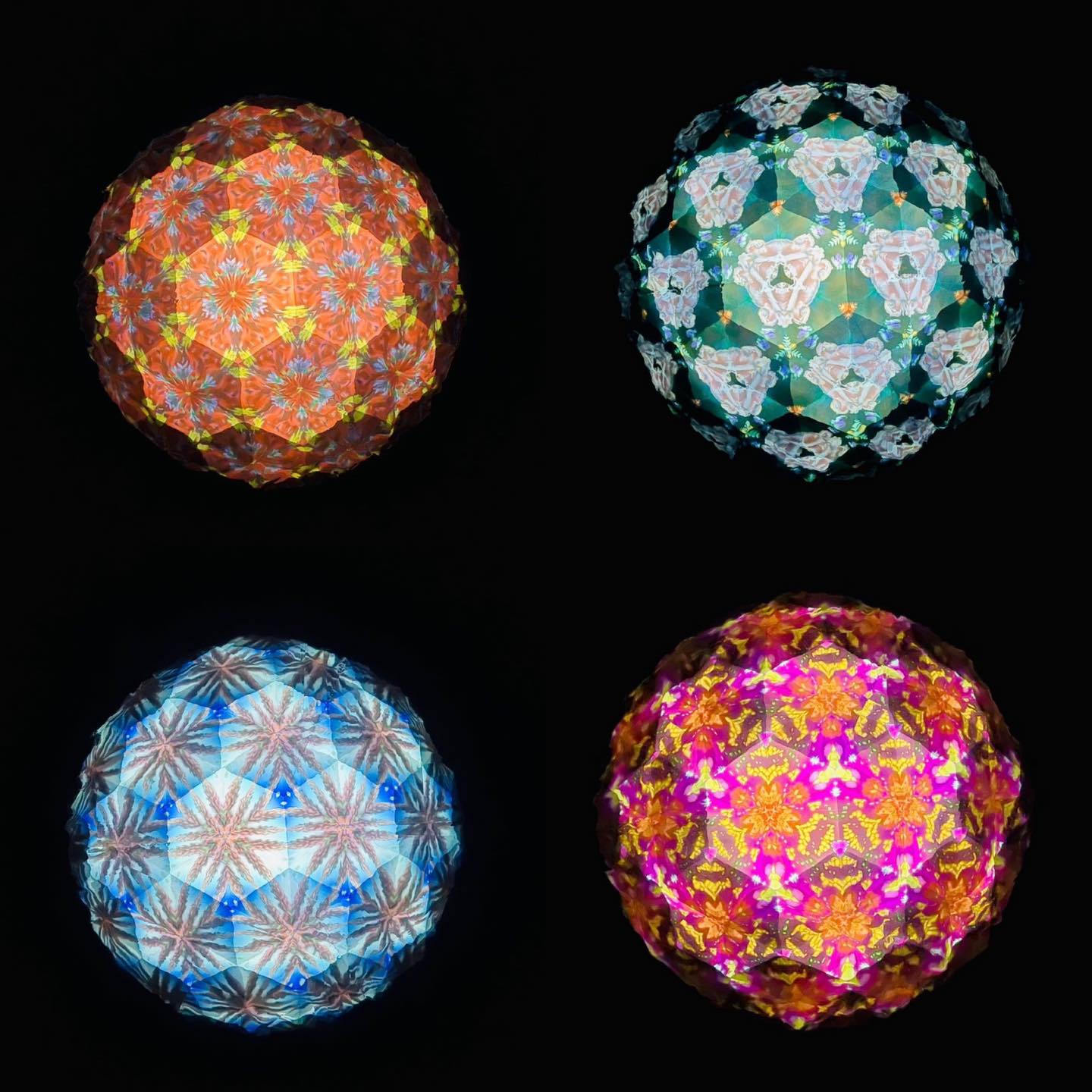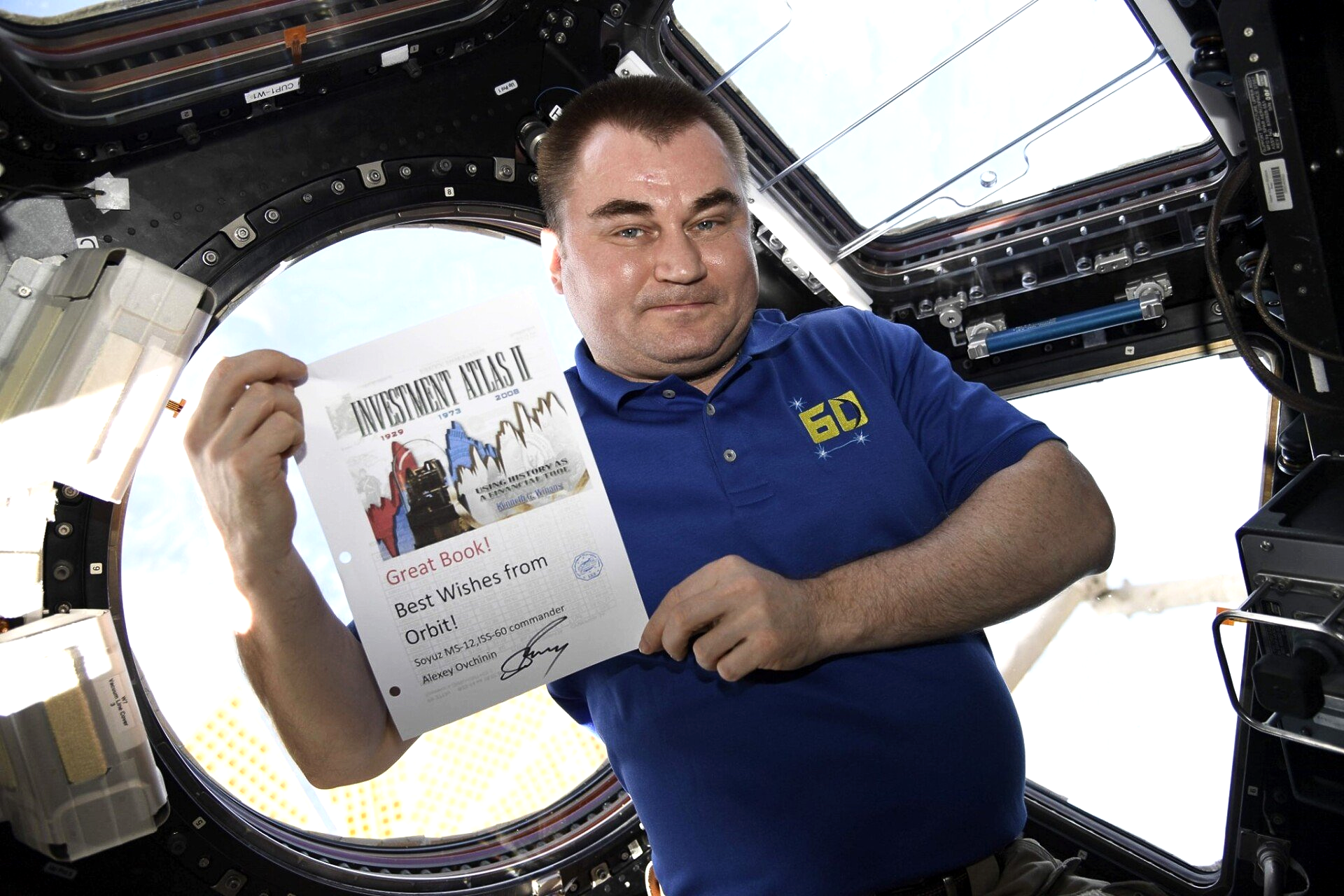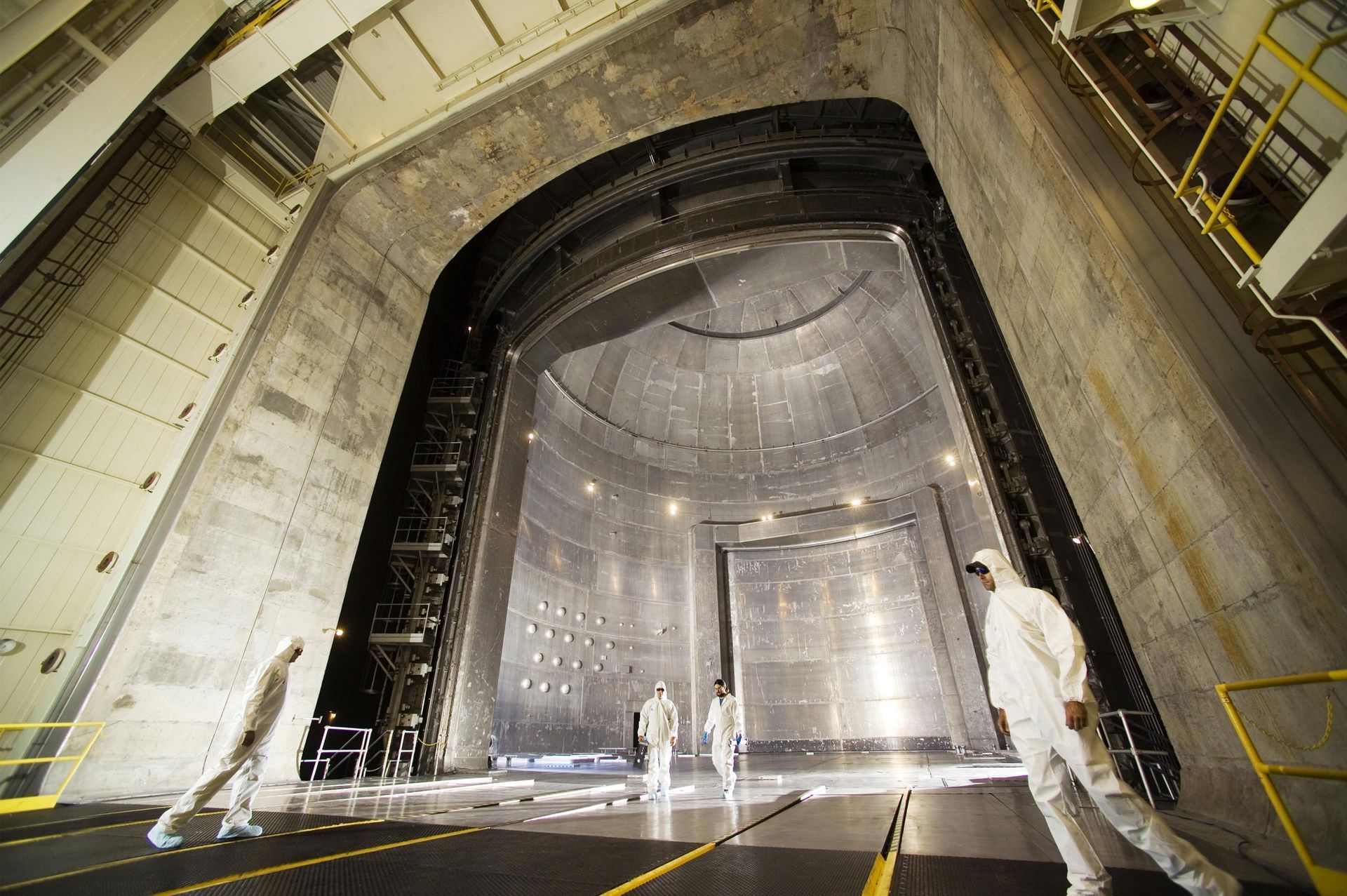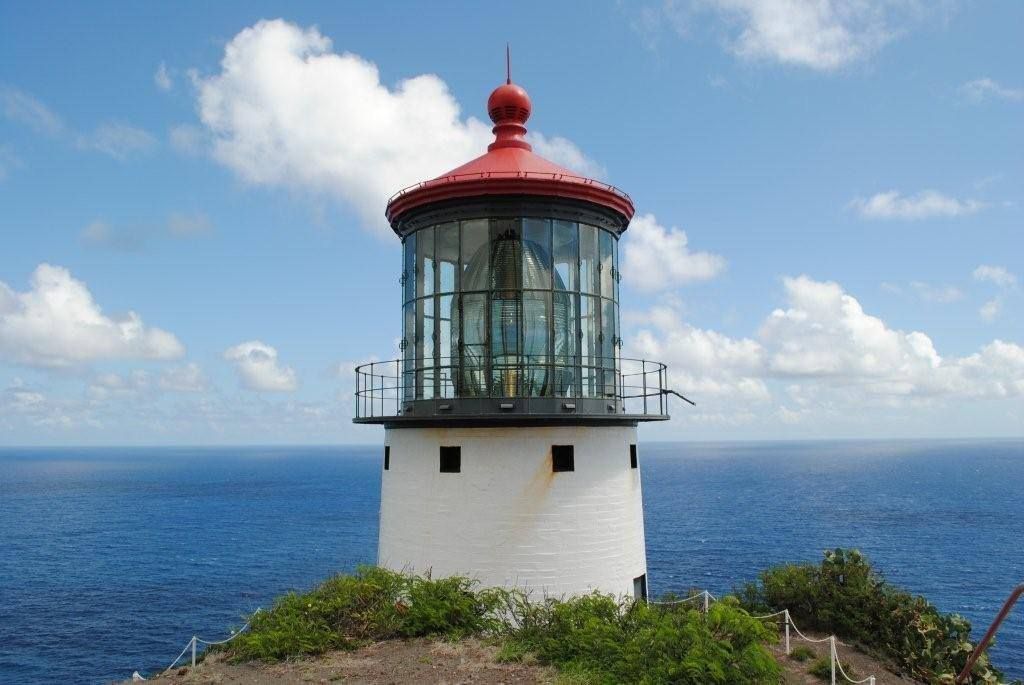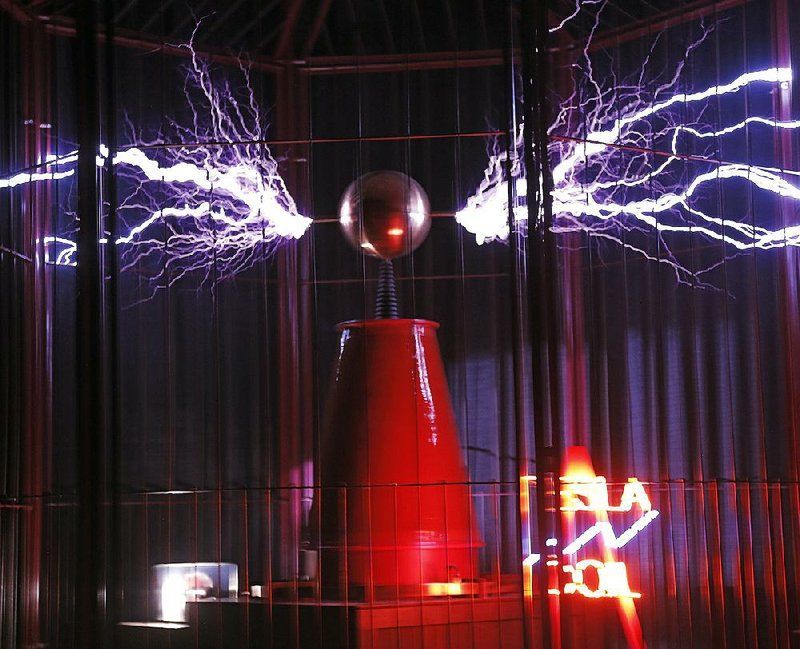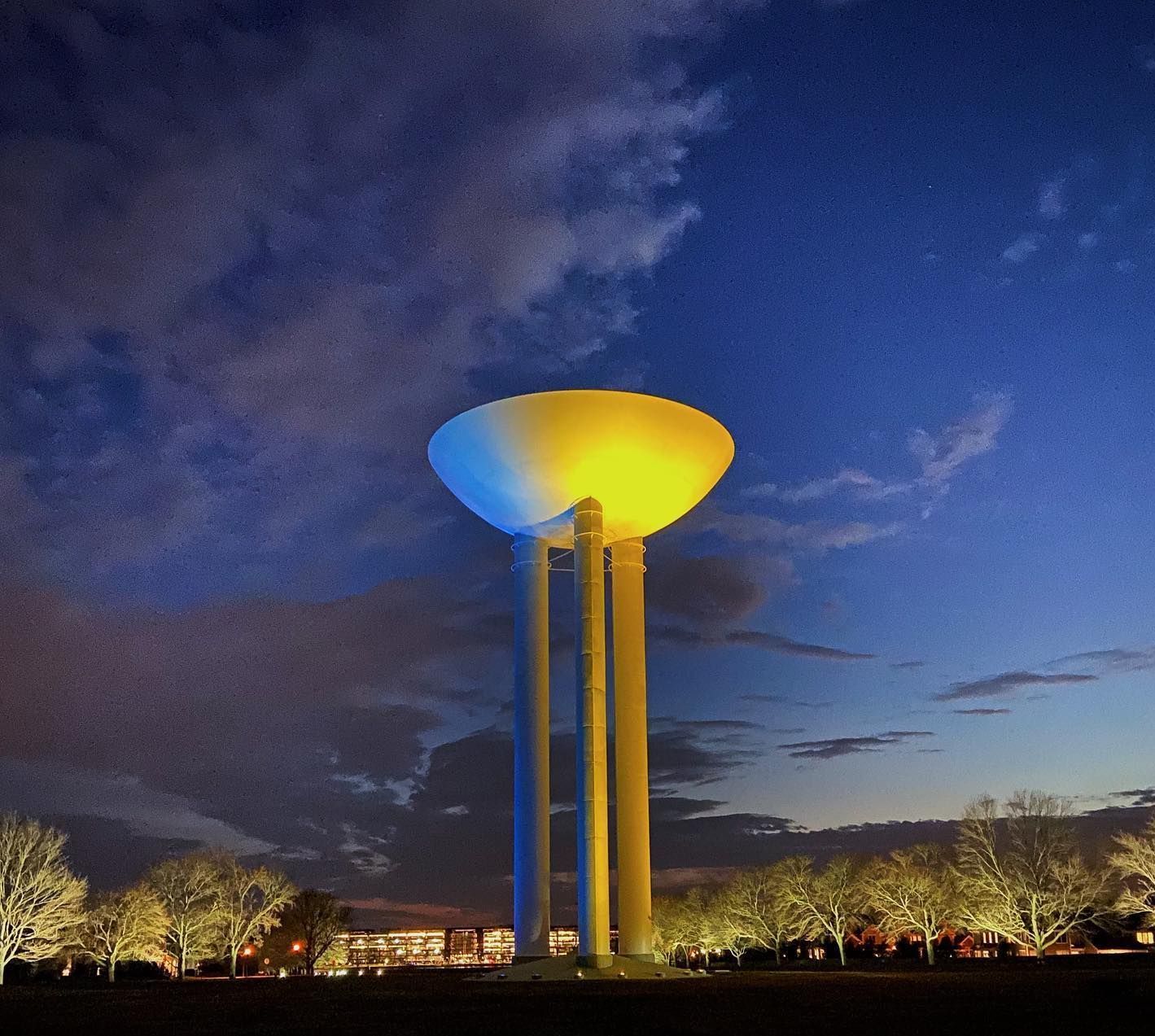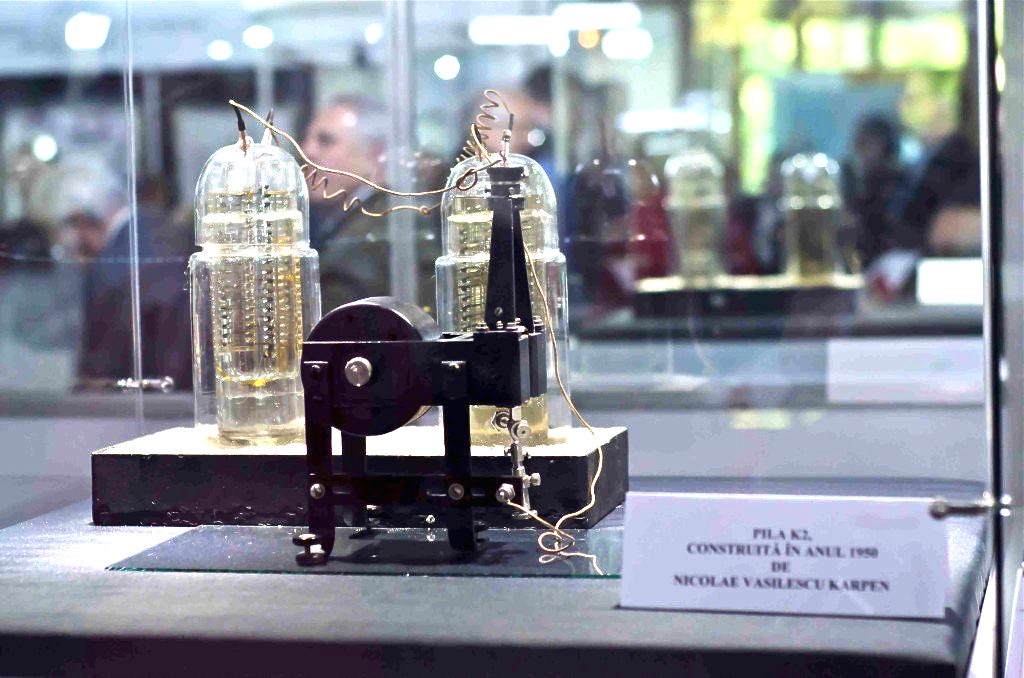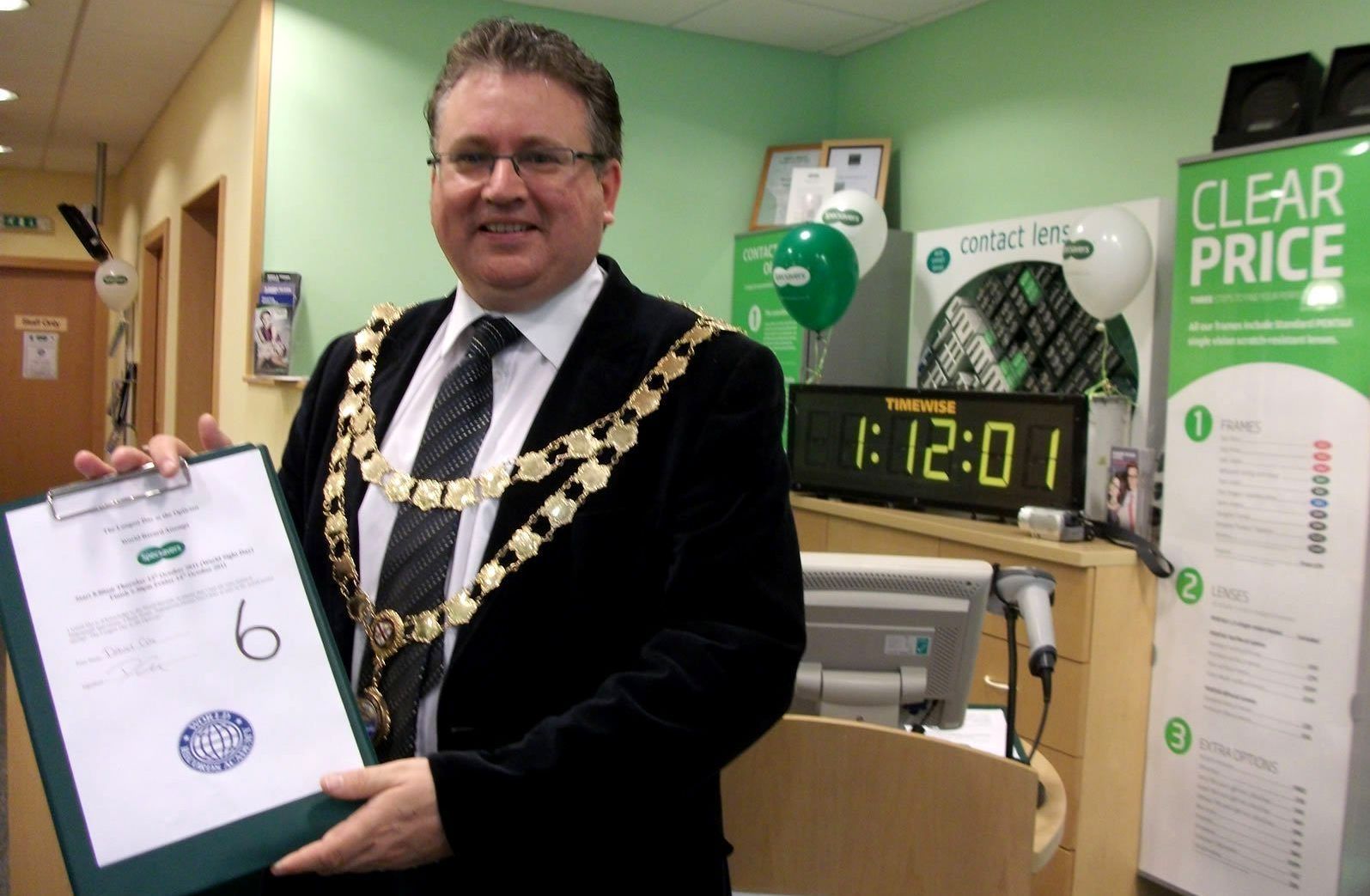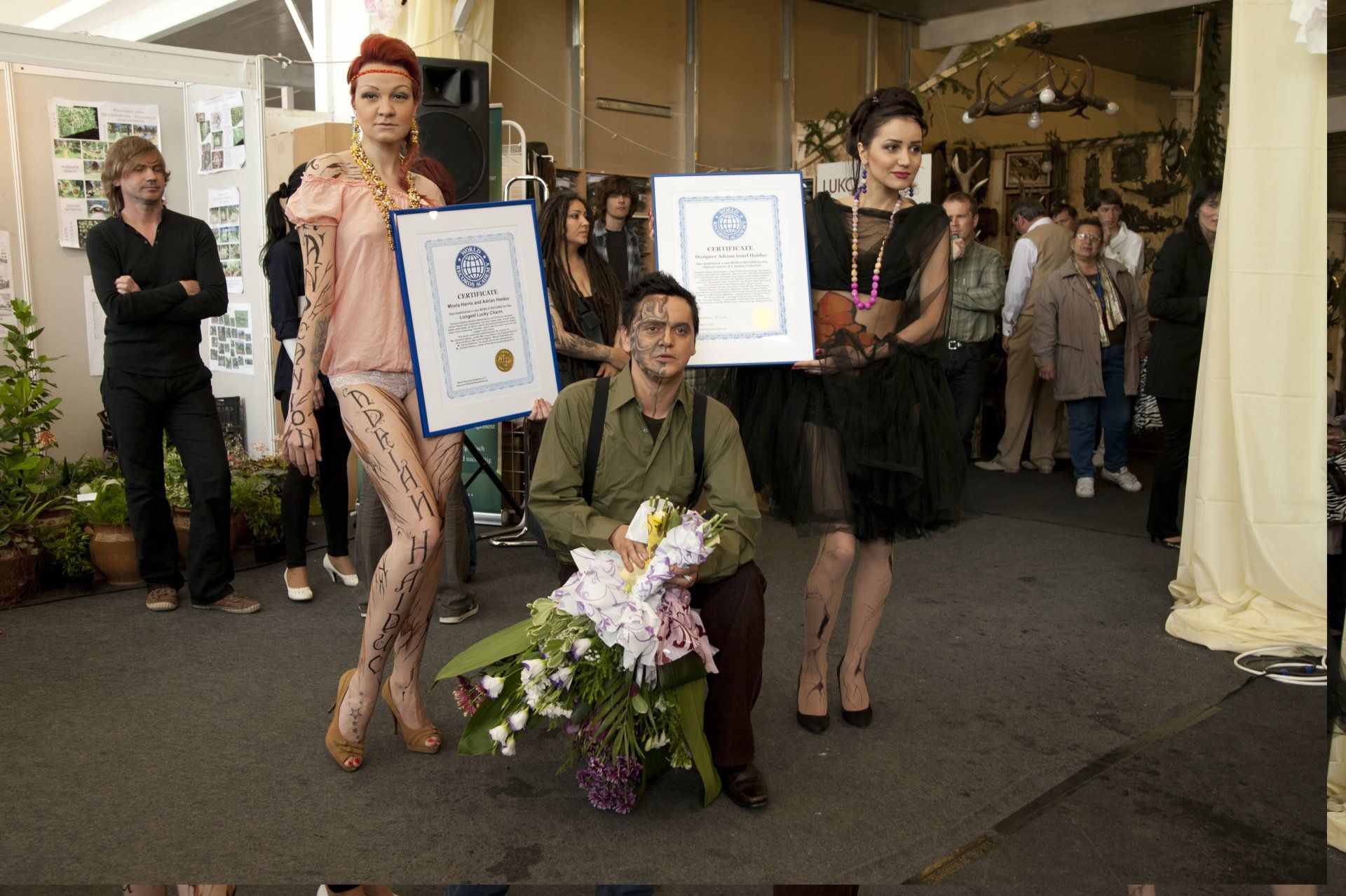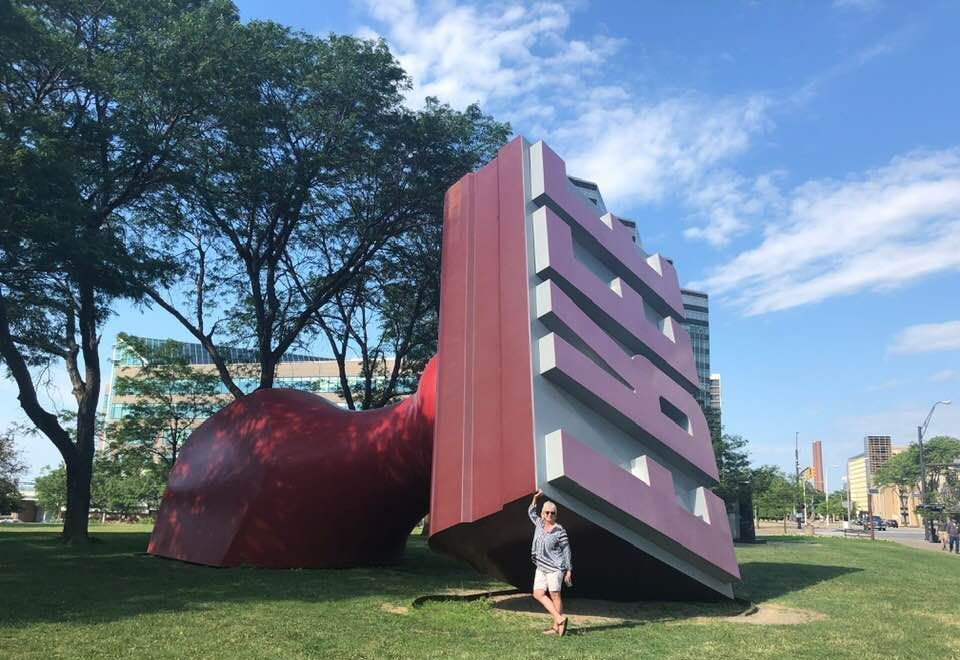World's First Radio Telescope, world record in Wheaton, Illinois
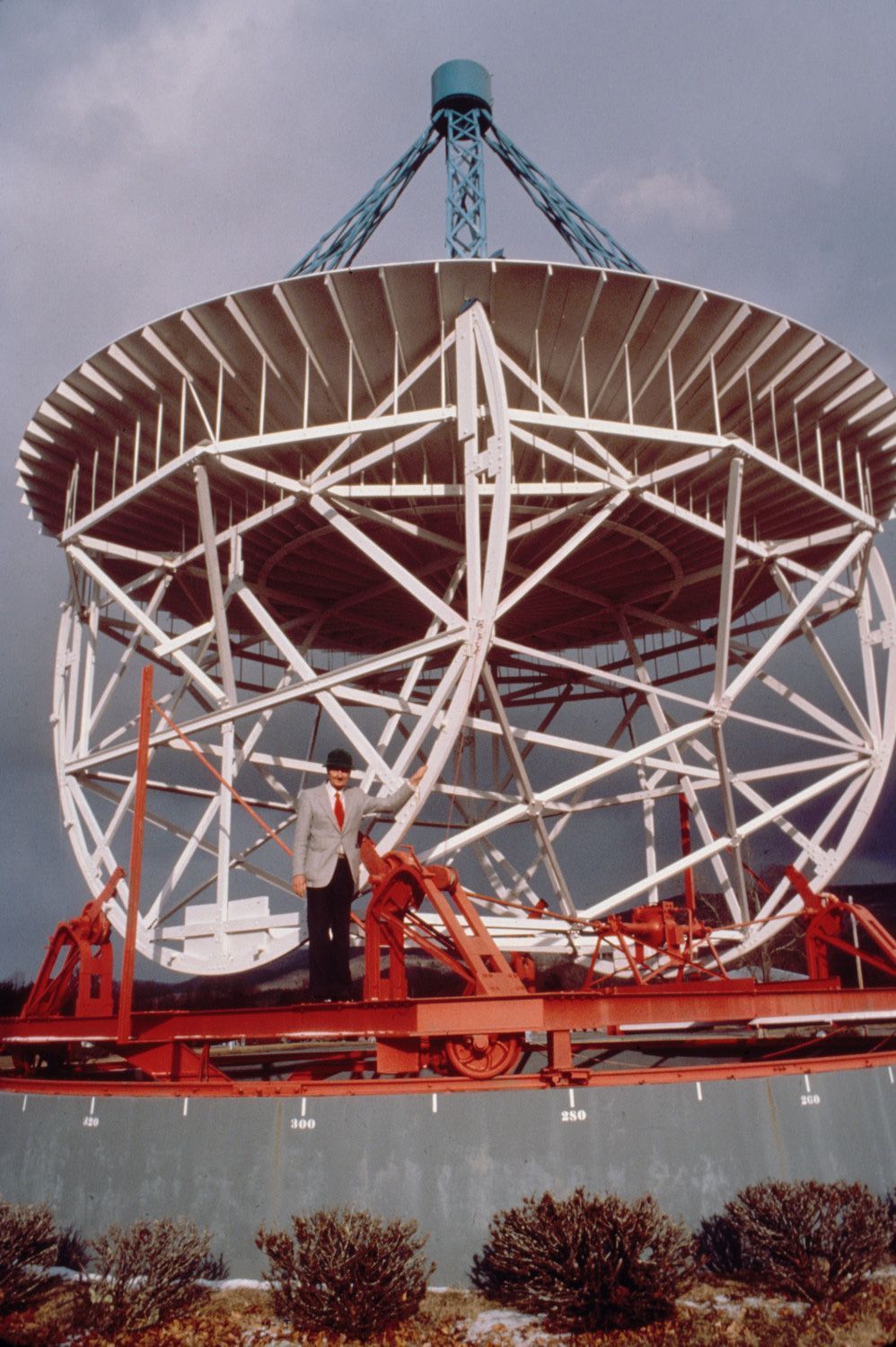
Wheaton, Illinois, United States--The Reber Radio Telescope is a historic radio telescope, built in 1937 in Illinois by astronomer Grote Reber, the first purpose-built parabolic radio telescope is now located at the Green Bank Observatory near Green Bank, West Virginia and sets the world record for being the World's First Radio Telescope, according to the WORLD RECORD ACADEMY.
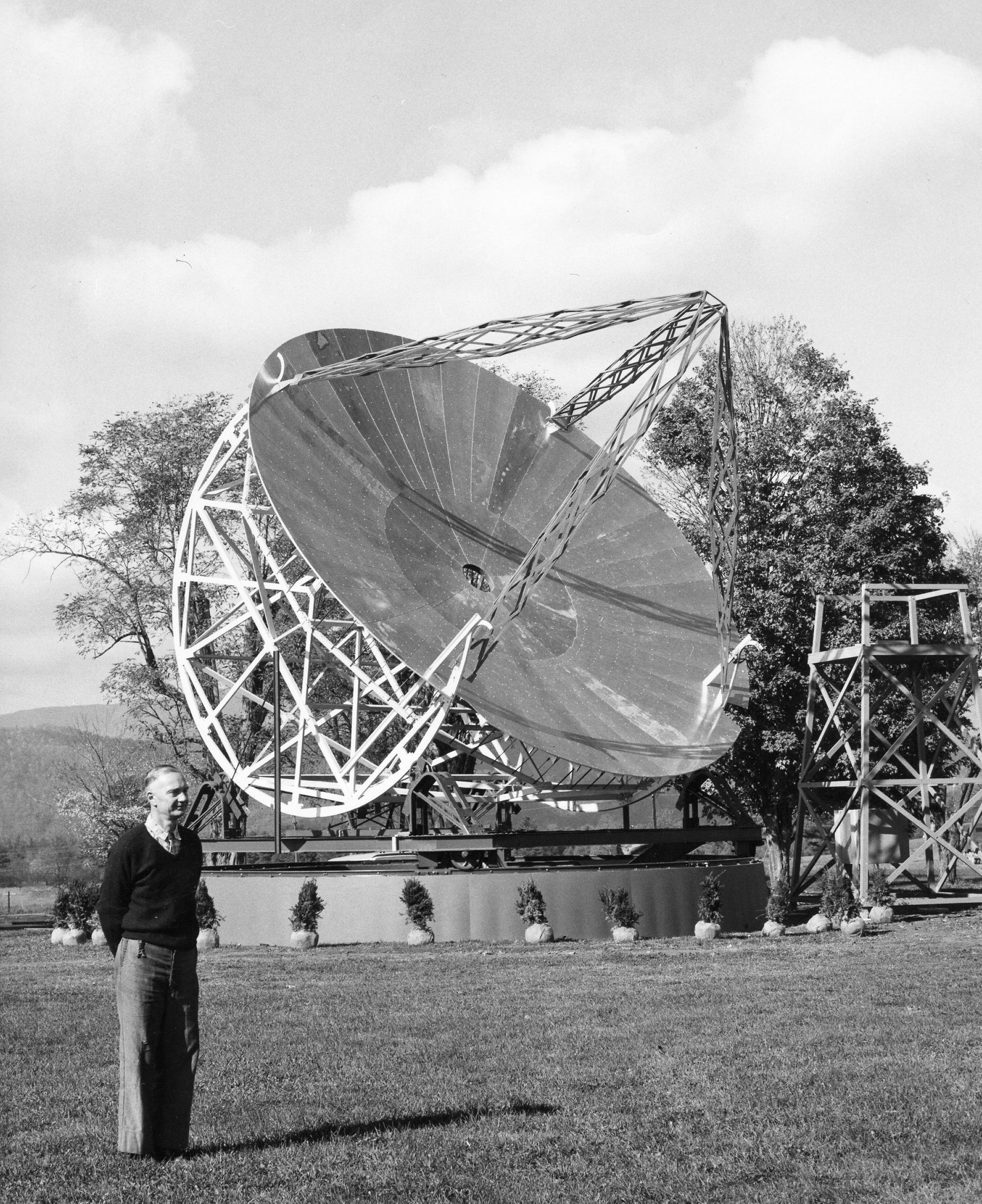
"The Reber Radio Telescope is a historic radio telescope, located at the Green Bank Observatory near Green Bank, West Virginia. Built in 1937 in Illinois by astronomer Grote Reber, it is the first purpose-built parabolic radio telescope. It was designated a National Historic Landmark in 1989.
"The Reber Radio Telescope is located on the grounds of the Green Bank Observatory (formerly part of the National Radio Astronomy Observatory) in rural Pocahontas County, West Virginia. It consists of a parabolic reflector composed of 72 radial rafters and covered in 26 gauge iron sheeting with a focal length of 20 feet (6.1 m). It is 31 feet 5 inches (9.58 m) in diameter, and is mounted on arched rails positioned on railroad wheels, allowing its angle of elevation to be controlled.
"The telescope was built by astronomer Grote Reber in his back yard in Wheaton, Illinois in 1937, following up on the research of Karl Jansky, the discoverer (in 1933) of radio waves emanating from the Milky Way. It was the second radio telescope ever built (after Jansky's dipole array), and the first parabolic radio telescope, serving as a prototype for the first large dish radio telescopes such as the Green Bank Telescope and Lovell Telescope constructed after World War II. Reber was the world's only radio astronomer at the time, and his construction of the telescope and the sky surveys he did with it helped found the field of radio astronomy, revealing radio sources such as Cassiopeia A and Cygnus X-1 for the first time.
"Reber sold the telescope to the US National Bureau of Standards and it was moved to Sterling, Virginia. It later became the property of the National Radio Astronomy Observatory (NRAO) and was moved to Boulder, Colorado, before being moved to the Green Bank facility in West Virginia." (Wikipedia)
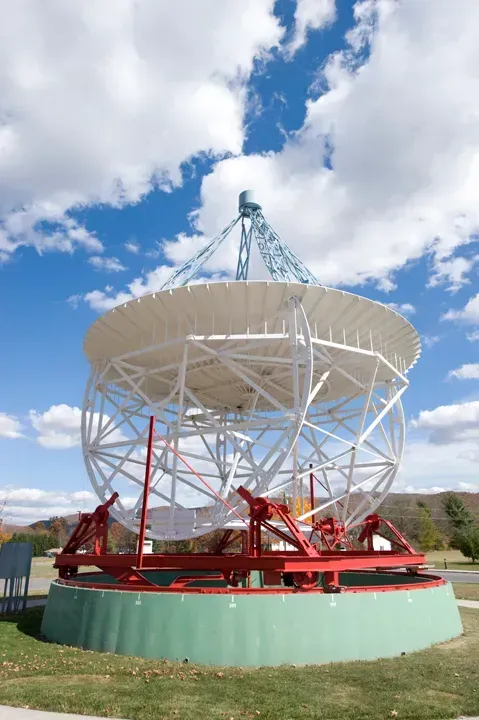
"In a side yard of his mother’s house in Wheaton, Illinois, a 26-year old engineer named Grote Reber built the first dish antenna radio telescope in 1937," the National Radio Astronomy Observatory says.
"He used wooden rafters, galvanized sheet metal, and spare parts from a Ford Model T truck.
"With this 31-foot diameter telescope, Reber mapped the radio structure of our Galaxy, discovered bright sources of radio waves outside our Galaxy, and made the observations that would later help physicists discover non-thermal radiation."
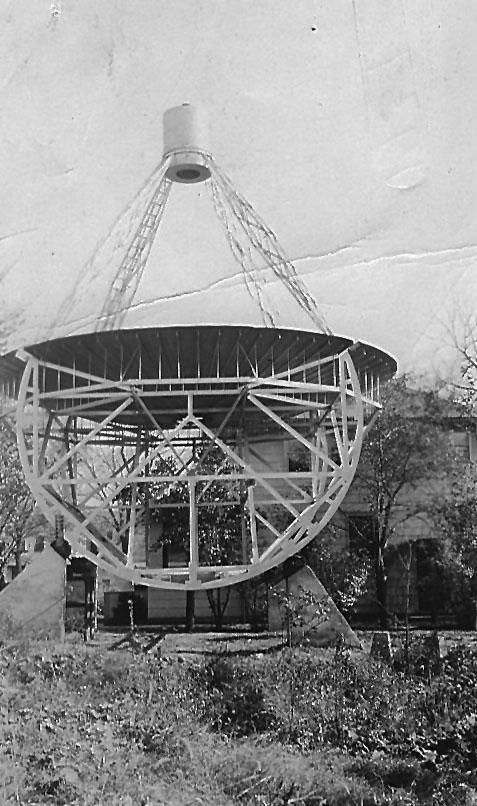
"The Reber Radio Telescope was designed and built by Grote Reber in 1937 for his personal use in conducting research in the newly emerging field of radio astronomy. The original location of the telescope was in the backyard of his house at 212 West Seminary Road, in Wheaton, Illinois. Grote Reber's house is no longer extant. The entire block of 200 West Seminary Road, in Wheaton, Illinois, was demolished during the 1950s to construct a public park," the
National Park Service says.
"The telescope was originally a 31 foot 5-inch transit-mounted parabolic radio telescope reflector made from 72 wooden radial rafters, covered with skin of 26 gauge point iron (focal length: 20 feet), and 2 elevated arches positioned on railroad wheels to permit changes in elevation angles. The telescope took about 4 months to build and weighed about 2 tons when completed.
"Reber used the telescope from 1937 to 1948 when he sold it to the National Bureau of Standards which moved it to an observing site in Sterling, Virginia. After the telescope was moved to Sterling, the National Bureau of Standards mounted the entire instrument on a turntable thus changing the original transit design to an altazimuth design."
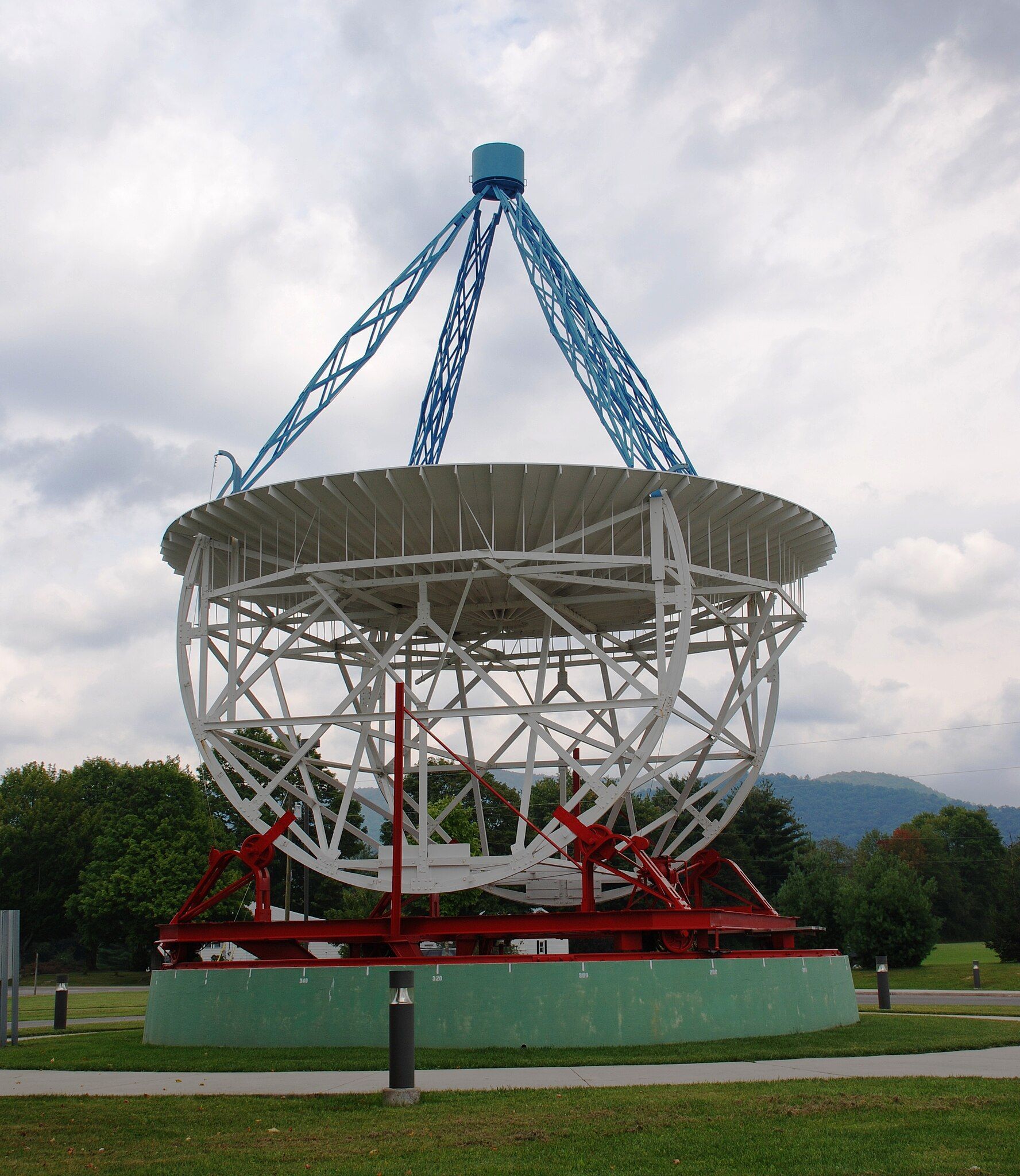
"The Reber Radio Telescope was the first parabolic antenna specifically designed and built to do research in the newly emerging field of radio astronomy. The telescope was designed and built by Grote Reber, an amateur astronomer and electronics expert from Wheaton, Illinois , who from 1937 until after World War II, was the world's only active radio astronomer. The telescope design is the forerunner of the majority of present day radio telescopes, the National Park Service says.
"In 1952 the telescope was disassembled and shipped to another observing site in Boulder, Colorado. Finally, in 1957, it was acquired by the National Radio Astronomy Observatory, in Green Bank, West Virginia, where in 1959-60 it was reassembled under Grote Reber's personal supervision. Some wooden parts were found deteriorated and replaced during this process. The telescope now stands on its 1948 turntable to the left of the entrance road of the National Radio Astronomy Observatory, in Green Bank, West Virginia, in proximity to the Karl Guthe Jansky Replica Antenna and the Ewen-Purcell Antenna.
"With the exception of the change of mounting from the transit design to the altazimuth design and the replacement of some deteriorated wooden support members, the telescope retains its integrity from the period of its first use by Grote Reber in 1937-48. The telescope is in good condition and can be used for radio astronomy if needed."
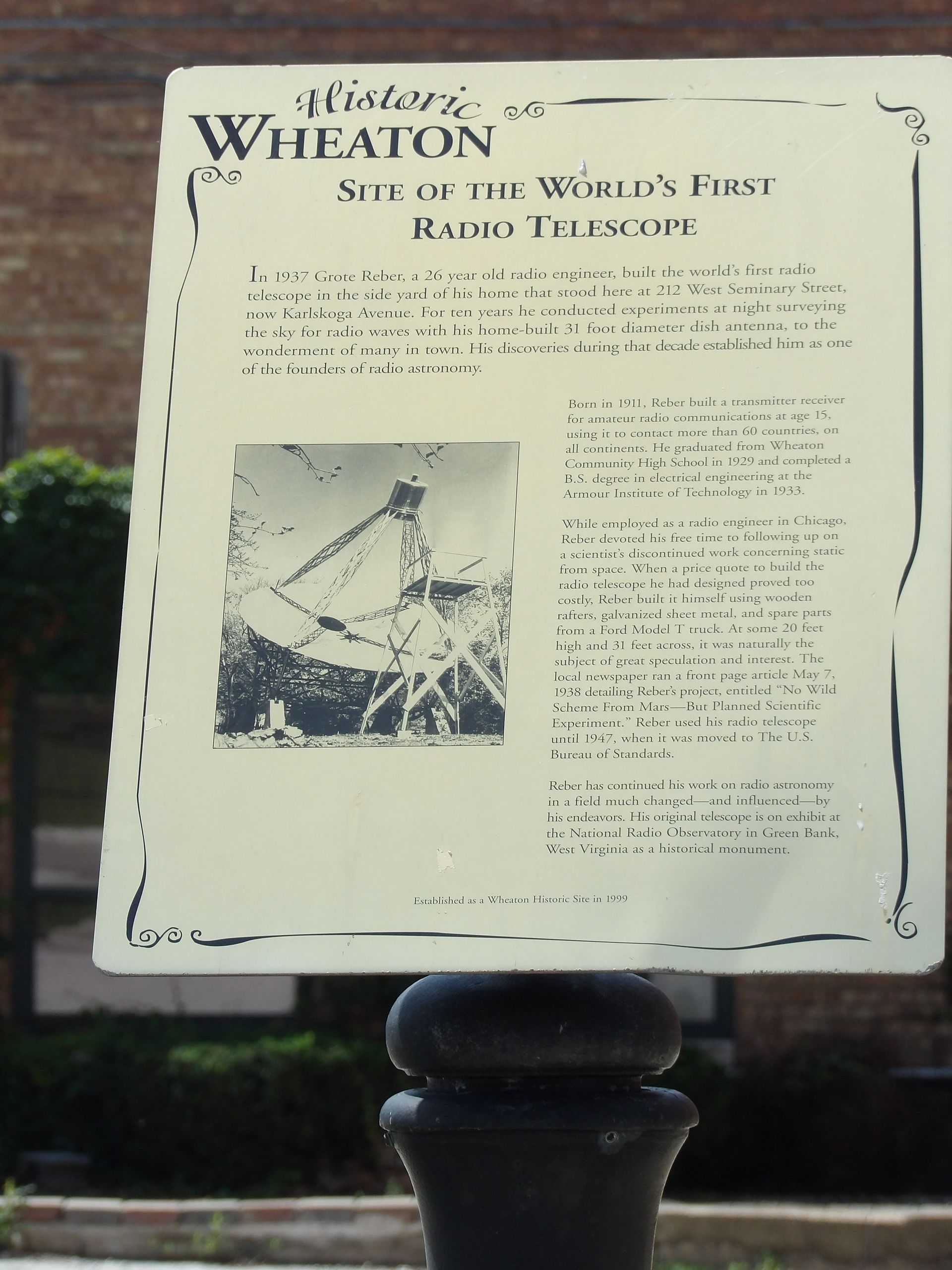
"In 1937 Grote Reber, a 26 year old radio engineer, built the world's first radio telescope in the side yard of his home that stood here at 212 West Seminary Street, now Karlskoga Avenue. For ten years he conducted experiments at night surveying the sky for radio waves with his home-built 31 foot diameter dish antenna, to the wonderment of many in town. His discoveries during that decade established him as one of the founders of radio astronomy," the
Read The Plaque says.
"Born in 1911, Reber built a transmitter receiver for amateur radio communications at age 15, using it to contact more than 60 countries, on all continents. He graduated from Wheaton Community High School in 1929 and completed a B.S. degree in electrical engineering at the Armour Institute of Technology in 1933.
"While employed as a radio engineer in Chicago, Reber devoted his free time to following up on a scientist's discontinued work concerning static from space. WHen a price quote to build the radio telescope he had designed proved too costly, Reber built it himself using wooden rafters, galvanized sheet metal, and spare parts from a Ford Model T truck. At some 20 feet high and 31 feet across, it was naturally the subject of great speculation and interest. The local newspaper ran a front page article May 7, 1928 detailing Reber's project, entitled "No Wild Scheme From Mars-But Planned Scientific Experiment." Reber used his radio telescope until 1947, when it was moved to The U.S. Bureau of Standards."
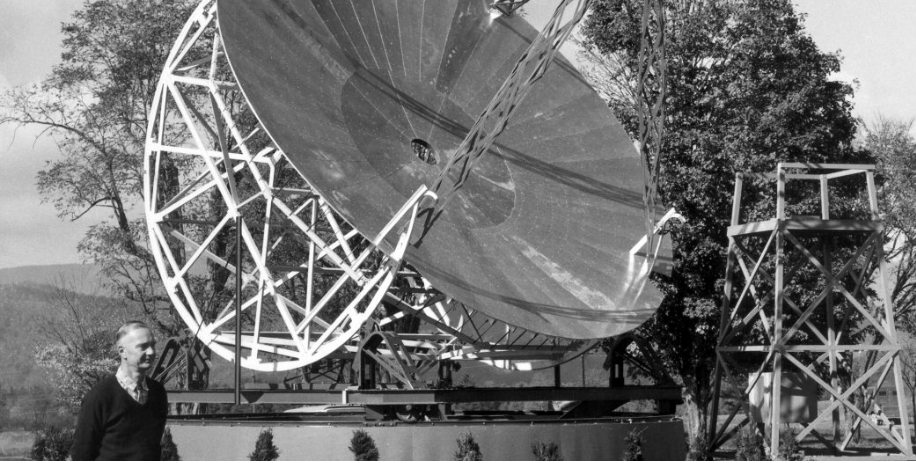
"In 1937 Grote Reber, a 26-year-old radio engineer, built the world's first radio telescope in the side yard of his home that stood here at 212 West Seminary Street, now Karlskoga Avenue. For ten years he conducted experiments at night surveying the sky for radio waves with his home-built 31-foot diameter dish antenna, to the wonderment of many in town. His discoveries during that decade established him as one of the founders of radio astronomy,"
The Historical Marker Database says.
"Born in 1911, Reber built a transmitter receiver for amateur radio communications at age 15, using it to contact more than 60 countries, on all continents. He graduated from Wheaton Community High School in 1929 and completed a B.S. degree in electrical engineering at the Armour Institute of Technology in 1933.
"While employed as a radio engineer in Chicago, Reber devoted his free time to following up on a scientist's discontinued work concerning static from space. When a price quote to build the radio telescope he had designed proved too costly, Reber built it himself using wooden rafters, galvanized sheet metal, and spare parts from a Ford Model T truck. At some 20 feet high and 31 feet across, it was naturally the subject of great speculation and interest. The local newspaper ran a front page article May 7, 1938 detailing Reber's project, entitled “No Wild Scheme From Mars-But Planned Scientific Experiment.” Reber used his radio telescope until 1947, when it was moved to The U.S. Bureau of Standards.
"Reber has continued his work on radio astronomy in a field much changed – and influenced – by his endeavors. His original telescope is on exhibit at the National Radio Observatory in Green Bank, West Virginia as a historical monument. Established as a Wheaton Historic Site in 1999."

"In 1932 Karl Jansky, a radio engineer at the Bell Laboratories campus in Holmdel, New Jersey, published a paper with the rather sedate title “Directional Studies of Atmospherics at High Frequencies.” The paper described his work identifying the sources of radio static experienced when testing Bell Laboratories’ new trans-Atlantic radio telephone service. Most of the static came from thunderstorms, but Jansky also identified errant radio signals from another source, seemingly coming from the direction of the sun," the National Institute of Standards and Technology says.
"Hoping to pick up where Jansky left off was a 22-year-old college senior named Grote Reber. He had read Jansky’s papers and excitedly applied to work at Bell Labs. Bell turned him down. Inquiries at several other institutions received the same response. Reber settled for a job as an engineer with a radio equipment manufacturer in Chicago and decided to pursue radio astronomy as a hobby. He would spend his free nights and weekends in the backyard of his Wheaton, Illinois, home designing and building a 9-meter-wide, 2-metric-ton dish antenna on an adjustable stand. Completed in 1937, it is considered to be the world’s first astronomical radio telescope. Reber used his backyard dish to map cosmic radio sources, discovering new galaxies, supernovas and other celestial bodies.
"He published some of his findings in 1940 in the Astronomical Journal, but the article attracted little interest. Partly this was the fault of the Great Depression; there was no funding available to explore new avenues of science. Reber would also later claim that the lack of interest was because “the astronomers of the time didn’t know anything about radio or electronics, and the radio engineers didn’t know anything about astronomy.” Whatever the reason, Reber would spend a decade working out of his backyard, essentially the world’s only radio astronomer."
"The telescope was constructed by Grote Reber in 1937 in his back yard in Wheaton, Illinois (a suburb of Chicago). He built the telescope at his own expense while working full time for a radio company in Chicago. The image to the right shows the telescope as it was in Wheaton, Ill," the
Green Bank Observatory says
"The mirror, made of sheet metal 31.4 feet in diameter, focuses radio waves to a point 20 feet above the dish. The cylinder contains the radio receiver which amplifies the faint cosmic signals by a factor of many million, making them strong enough to be recorded on a chart. The wooden tower at the left is used for access to the receiver.
"Reber built a parabolic dish reflector because this shape focuses waves to the same focus for all wavelengths. This principle had been used for a long time by astronomers for design of optical telescopes, to avoid chromatic aberration. Reber knew that it would be important to observe a wide range of wavelengths of radiation from the sky in order to understand how the radiation was being produced. A parabolic reflector is usable over a wide wavelength range."
Photos: World's First Radio Telescope, world record in Wheaton, Illinois
(1) Grote Reber stands at the Reber Antenna in Green Bank, West Virginia, in 1988. Photo: NRAO/AUI
(2) Grote Reber with original radio Telescope first constructed at Wheaton, Illinois in the summer of 1937. This telescope is now installed at the National Radio Astronomy Observatory, Green Bank, West Virginia, where this photo was taken. Photo: Research Corporation, courtesy of Emilio Segrè Visual Archives
(4) National Radio Astronomy Observatory
(6) The Historical Marker Database
(7) KB6NU
(8) Amateur radio astronomer Grote Reber´s 9 meter (31.4 ft) parabolic radio telescope antenna, which he built in his backyard in Illinois in 1937. This was the second radio telescope ever built (after Karl Jansky's dipole array antenna), the first parabolic radio telescope and the first large parabolic dish, serving as the prototype for large dish radio telescopes built after World War 2. Its construction and the sky survey Reber did with it helped found the field of radio astronomy. Photo: Wikimedia/Grote Reber/National Radio Astronomy Observatory


